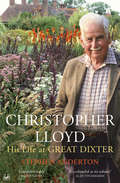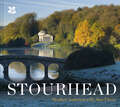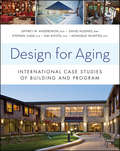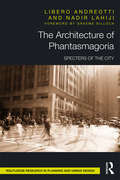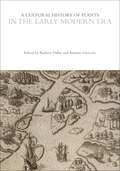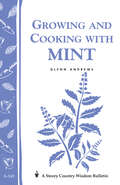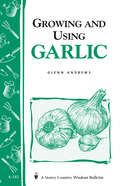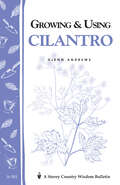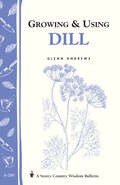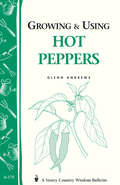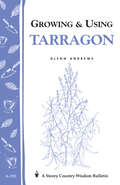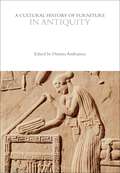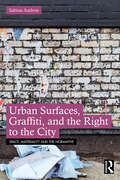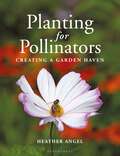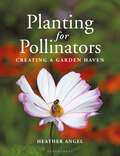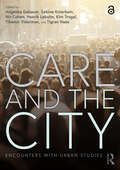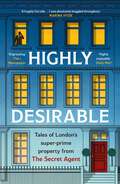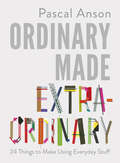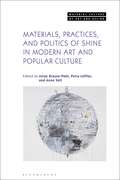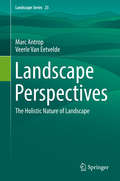- Table View
- List View
Homes for a Changing Climate: Adapting Our Homes and Communities to Cope with the Climate of the 21st Century
by Will AndersonAn exploration into the history of our collective response to the challenges of extreme weather conditions and climate.At the beginning of the twenty-first century, the world finally woke up to the reality of climate change and began the arduous task of freeing itself from dependence on fossil fuels. But the time lag in the Earth's ecosystem is such that our best efforts to cut carbon today will make little difference to the changing climate of the next 30 years. As we work towards a secure, low-carbon future, we must address the changes that are already taking place in the planet's climate. We must learn to live with higher temperatures, intense rainstorms, rising sea levels and prolonged drought. We must also confront the secondary impacts of climate change, especially on energy and food security.Britain has a mild, temperate climate where occasional weather extremes tend to have serious impacts because we are simply not prepared for them. Yet across the world, communities have been living with such extremes for millennia. If we have the imagination to learn from others and rethink the ways we build and live together, we can face this unsettling future with confidence.Homes for a Changing Climate celebrates this collective wisdom, exploring traditional and contemporary responses to the challenges of climate and illustrating the many ways in which houses can be designed, built and adapted to cope with these challenges. Examples are drawn from across Europe including the supervolcano of Thera, the 100mph winds of the Western Isles, and the cutting-edge eco-building projects in Britain. Based on the climate projections for the UK published by the Met Office in June 2009, Homes for a Changing Climate combines inspiring case studies, striking photography and practical advice to create a book of imagination and hope in uncertain times.
Homes for a Changing Climate: Adapting Our Homes and Communities to Cope with the Climate of the 21st Century
by Will AndersonAn exploration into the history of our collective response to the challenges of extreme weather conditions and climate.At the beginning of the twenty-first century, the world finally woke up to the reality of climate change and began the arduous task of freeing itself from dependence on fossil fuels. But the time lag in the Earth's ecosystem is such that our best efforts to cut carbon today will make little difference to the changing climate of the next 30 years. As we work towards a secure, low-carbon future, we must address the changes that are already taking place in the planet's climate. We must learn to live with higher temperatures, intense rainstorms, rising sea levels and prolonged drought. We must also confront the secondary impacts of climate change, especially on energy and food security.Britain has a mild, temperate climate where occasional weather extremes tend to have serious impacts because we are simply not prepared for them. Yet across the world, communities have been living with such extremes for millennia. If we have the imagination to learn from others and rethink the ways we build and live together, we can face this unsettling future with confidence.Homes for a Changing Climate celebrates this collective wisdom, exploring traditional and contemporary responses to the challenges of climate and illustrating the many ways in which houses can be designed, built and adapted to cope with these challenges. Examples are drawn from across Europe including the supervolcano of Thera, the 100mph winds of the Western Isles, and the cutting-edge eco-building projects in Britain. Based on the climate projections for the UK published by the Met Office in June 2009, Homes for a Changing Climate combines inspiring case studies, striking photography and practical advice to create a book of imagination and hope in uncertain times.
Christopher Lloyd: His Life at Great Dixter (Pimlico Ser.)
by Stephen AndertonChristopher Lloyd (Christo) was one of the greatest English gardeners of the twentieth century, perhaps the finest plantsman of them all. His creation is the garden at Great Dixter in East Sussex, and it is a tribute to his vision and achievement that, after his death in 2006, the Heritage Lottery Fund made a grant of £4 million to help preserve it for the nation. This enjoyable and revealing book - the first biography of Christo - is also the story of Dixter from 1910 to 2006, a unique unbroken history of one English house and one English garden spanning a century. It was Christo's father, Nathaniel, who bought the medieval manor at Dixter and called in the fashionable Edwardian architect, Lutyens, to rebuild the house and lay out the garden. And it was his mother, Daisy, who made the first wild garden in the meadows there. Christo was born at Dixter in 1921. Apart from boarding school, war service and a period at horticultural college, he spent his whole life there, constantly re-planting and enriching the garden, while turning out landmark books and exhaustive journalism. Opinionated, argumentative and gloriously eccentric, he changed the face of English gardening through his passions for meadow gardening, dazzling colours and thorough husbandry. As the baby of a family of six - five boys and a girl - Christo was stifled by his adoring mother. Music-loving and sports-hating, he knew the Latin names of plants before he was eight. This fascinating book reveals what made Christo tick by examining his relationships with his generous but scheming mother, his like-minded friends (such as gardeners Anna Pavord and Beth Chatto) and his colleagues (including his head gardener, Fergus Garrett, a plantsman in Christo's own mould).
Stourhead
by Stephen AndertonA beautifully illustrated celebration of Stourhead, featuring the legendary Georgian landscape garden in glorious autumn colour with essays by head gardener Alan Power.
Design for Aging: International Case Studies of Building and Program (Wiley Series in Healthcare and Senior Living Design #10)
by Jeffrey W. Anderzhon David Hughes Stephen Judd Emi Kiyota Monique WijntiesArchitecture/Interior Design An in-depth look at the most innovative aged care facilities today With the world's population aging at a rapid pace, there is a growing need for new ways to provide residential care for older people. Design for Aging explores some of the most successful examples of elderly housing today, focusing on integrating architectural considerations within an unwavering people-driven approach. Written by an international team of experts in aged care design, the book brings together twenty-six case studies from around the world, including Australia, Denmark, England, Japan, the Netherlands, Sweden, and the United States. The authors describe how each scheme has succeeded in addressing the needs of its residents regardless of wide variations in design, geography, cultural factors, medical needs, capital cost, and other factors. Clear, well-documented information for each facility includes: Building descriptions and project data, and how the overall design fits within a geographical location The type of community, including number of residents, ethnicity, and specific conditions such as dementia How to apply universal design principles in different political, social, and regulatory contexts How to create a sense of belonging and well-being for residents while building strong connections with the community at large What makes a facility able to attract and retain high-quality caregivers Environmental sustainability issues, plus indoor and outdoor spaces Architects and interior designers as well as facility owners and caregivers will find Design for Aging an inspiring and practical guide on how to navigate the many factors involved in creating good designs for aged care environments.
Design for Aging: International Case Studies of Building and Program (Wiley Series in Healthcare and Senior Living Design #10)
by Jeffrey W. Anderzhon David Hughes Stephen Judd Emi Kiyota Monique WijntiesArchitecture/Interior Design An in-depth look at the most innovative aged care facilities today With the world's population aging at a rapid pace, there is a growing need for new ways to provide residential care for older people. Design for Aging explores some of the most successful examples of elderly housing today, focusing on integrating architectural considerations within an unwavering people-driven approach. Written by an international team of experts in aged care design, the book brings together twenty-six case studies from around the world, including Australia, Denmark, England, Japan, the Netherlands, Sweden, and the United States. The authors describe how each scheme has succeeded in addressing the needs of its residents regardless of wide variations in design, geography, cultural factors, medical needs, capital cost, and other factors. Clear, well-documented information for each facility includes: Building descriptions and project data, and how the overall design fits within a geographical location The type of community, including number of residents, ethnicity, and specific conditions such as dementia How to apply universal design principles in different political, social, and regulatory contexts How to create a sense of belonging and well-being for residents while building strong connections with the community at large What makes a facility able to attract and retain high-quality caregivers Environmental sustainability issues, plus indoor and outdoor spaces Architects and interior designers as well as facility owners and caregivers will find Design for Aging an inspiring and practical guide on how to navigate the many factors involved in creating good designs for aged care environments.
The Architecture of Phantasmagoria: Specters of the City
by Libero Andreotti Nadir LahijiIn a time of mass-mediated modernity, the city becomes, almost by definition, a constitutively ‘mediated’ city. Today, more than ever before, the omnipresence of media in every sphere of culture is creating a new urban ontology, saturating, fracturing, and exacerbating the manifold experience of city life. The authors describe this condition as one of 'hyper-mediation' – a qualitatively new phase in the city’s historical evolution. The concept of phantasmagoria has pride of place in their study; using it as an all-embracing explanatory framework, they explore its meanings as a critical category to understand the culture, and the architecture, of the contemporary city. Andreotti and Lahiji argue that any account of architecture that does not include understanding the role and function of media and its impact on the city in the present ‘tele-technological-capitalist’ society is fundamentally flawed and incomplete. Their approach moves from Walter Benjamin, through the concepts of phantasmagoria and of media – as theorized also by Theodor Adorno, Siegfried Kracauer, and a new generation of contemporary critics – towards a new socio-critical and aesthetic analysis of the mediated space of the contemporary city.
The Architecture of Phantasmagoria: Specters of the City
by Libero Andreotti Nadir LahijiIn a time of mass-mediated modernity, the city becomes, almost by definition, a constitutively ‘mediated’ city. Today, more than ever before, the omnipresence of media in every sphere of culture is creating a new urban ontology, saturating, fracturing, and exacerbating the manifold experience of city life. The authors describe this condition as one of 'hyper-mediation' – a qualitatively new phase in the city’s historical evolution. The concept of phantasmagoria has pride of place in their study; using it as an all-embracing explanatory framework, they explore its meanings as a critical category to understand the culture, and the architecture, of the contemporary city. Andreotti and Lahiji argue that any account of architecture that does not include understanding the role and function of media and its impact on the city in the present ‘tele-technological-capitalist’ society is fundamentally flawed and incomplete. Their approach moves from Walter Benjamin, through the concepts of phantasmagoria and of media – as theorized also by Theodor Adorno, Siegfried Kracauer, and a new generation of contemporary critics – towards a new socio-critical and aesthetic analysis of the mediated space of the contemporary city.
A Cultural History of Plants in the Early Modern Era (The Cultural Histories Series)
by Andrew Dalby and Annette GieseckeA Cultural History of Plants in the Early Modern Era covers the period from 1400 to 1650, a time of discovery and rediscovery, of experiment and innovation. Renaissance learning brought ancient knowledge to modern European consciousness whilst exploration placed all the continents in contact with one another. The dissemination of knowledge was further speeded by the spread of printing. New staples and spices, new botanical medicines, and new garden plants all catalysed agriculture, trade, and science. The great medical botanists of the period attempted no less than what Marlowe's Dr Faustus demanded - a book “wherein I might see all plants, herbs, and trees that grow upon the earth.” Human impact on plants and our botanical knowledge had irrevocably changed. The 6 volume set of the Cultural History of Plants presents the first comprehensive history of the uses and meanings of plants from prehistory to today. The themes covered in each volume are plants as staple foods; plants as luxury foods; trade and exploration; plant technology and science; plants and medicine; plants in culture; plants as natural ornaments; the representation of plants. Andrew Dalby is an independent scholar and writer, based in France. Annette Giesecke is Professor of Classics at the University of Delaware, USA. Volume 3 in the Cultural History of Plants set.General Editors: Annette Giesecke, University of Delaware, USA, and David Mabberley, University of Oxford, UK.
Growing and Cooking with Mint: Storey's Country Wisdom Bulletin A-145 (Storey Country Wisdom Bulletin)
by Glenn AndrewsSince 1973, Storey's Country Wisdom Bulletins have offered practical, hands-on instructions designed to help readers master dozens of country living skills quickly and easily. There are now more than 170 titles in this series, and their remarkable popularity reflects the common desire of country and city dwellers alike to cultivate personal independence in everyday life.
Growing and Using Garlic: Storey's Country Wisdom Bulletin A-183 (Storey Country Wisdom Bulletin)
by Glenn AndrewsSince 1973, Storey's Country Wisdom Bulletins have offered practical, hands-on instructions designed to help readers master dozens of country living skills quickly and easily. There are now more than 170 titles in this series, and their remarkable popularity reflects the common desire of country and city dwellers alike to cultivate personal independence in everyday life.
Growing & Using Cilantro: Storey's Country Wisdom Bulletin A-181 (Storey Country Wisdom Bulletin)
by Glenn AndrewsSince 1973, Storey's Country Wisdom Bulletins have offered practical, hands-on instructions designed to help readers master dozens of country living skills quickly and easily. There are now more than 170 titles in this series, and their remarkable popularity reflects the common desire of country and city dwellers alike to cultivate personal independence in everyday life.
Growing & Using Dill: Storey's Country Wisdom Bulletin A-200 (Storey Country Wisdom Bulletin)
by Glenn AndrewsSince 1973, Storey's Country Wisdom Bulletins have offered practical, hands-on instructions designed to help readers master dozens of country living skills quickly and easily. There are now more than 170 titles in this series, and their remarkable popularity reflects the common desire of country and city dwellers alike to cultivate personal independence in everyday life.
Growing & Using Hot Peppers: (Storey's Country Wisdom Bulletin A-170) (Storey Country Wisdom Bulletin)
by Glenn AndrewsSince 1973, Storey's Country Wisdom Bulletins have offered practical, hands-on instructions designed to help readers master dozens of country living skills quickly and easily. There are now more than 170 titles in this series, and their remarkable popularity reflects the common desire of country and city dwellers alike to cultivate personal independence in everyday life.
Growing & Using Tarragon: Storey's Country Wisdom Bulletin A-195 (Storey Country Wisdom Bulletin)
by Glenn AndrewsSince 1973, Storey's Country Wisdom Bulletins have offered practical, hands-on instructions designed to help readers master dozens of country living skills quickly and easily. There are now more than 170 titles in this series, and their remarkable popularity reflects the common desire of country and city dwellers alike to cultivate personal independence in everyday life.
A Cultural History of Furniture in Antiquity (The Cultural Histories Series)
by Dimitra AndrianouCovering the period from 2500 BCE to the Byzantine Era, this volume focuses on the social history of furniture found in houses, tombs and temples as narrated through the archaeological evidence. The earliest furniture can be seen as an attempt by humans to enhance their safety, comfort and social standing but it can also offer opportunities for understanding human behavior, values and thought: fine furniture was among the most valuable of possessions in the ancient world so it expressed power, wealth and status. It was appreciated as art, used in diplomacy (both as a gift and as tribute) and recorded as booty. At the same time, its practical and ceremonial uses yield important clues about the domestic environment and daily life in antiquity, as well as revealing aspects of sacred belief and funerary practices.Drawing upon a wealth of visual and textual sources, this volume presents essays that examine key characteristics of the furniture of the period on the themes of Design and Motifs; Makers, Making, and Materials; Types and Uses; The Domestic Setting; The Public Setting; Exhibition and Display; Furniture and Architecture; Visual Representations; and Verbal Representations.
Urban Surfaces, Graffiti, and the Right to the City (ISSN)
by Sabina AndronThis landmark book focuses on urban surfaces, on exploring their authorship and management, and on their role in struggles for the right to the city.Graffiti, pristine walls, advertising posters, and municipal signage all compete on city surfaces to establish and imprint their values on our environments. It is the first time that the surfacescapes of our cities are granted the entire attention of a book as material, visual, and legal territories. The book includes a critical history of graffiti and street art as contested surface discourses and argues for surfaces as sites of resistance against private property, neoliberal creativity, and the imposition of urban order. It also proposes a seven-point manual for a semiotics of urban surfaces, laying the ground for a new discipline: surface studies.Page after page and layer after layer, surfaces become porous and political and emerge as key spatial conditions for rethinking and re-practicing urban dwelling and spatial justice. They become what the author terms the surface commons.The book will appeal to a wide readership across the disciplines of urban studies, architectural theory and design, graffiti, street art and public art, criminology, semiotics, visual culture, and urban and legal geography. It will also serve as a tool for city scholars, policy makers, artists, and vandals to disrupt existing imaginaries of order, justice, and visibility in cities.
Urban Surfaces, Graffiti, and the Right to the City (ISSN)
by Sabina AndronThis landmark book focuses on urban surfaces, on exploring their authorship and management, and on their role in struggles for the right to the city.Graffiti, pristine walls, advertising posters, and municipal signage all compete on city surfaces to establish and imprint their values on our environments. It is the first time that the surfacescapes of our cities are granted the entire attention of a book as material, visual, and legal territories. The book includes a critical history of graffiti and street art as contested surface discourses and argues for surfaces as sites of resistance against private property, neoliberal creativity, and the imposition of urban order. It also proposes a seven-point manual for a semiotics of urban surfaces, laying the ground for a new discipline: surface studies.Page after page and layer after layer, surfaces become porous and political and emerge as key spatial conditions for rethinking and re-practicing urban dwelling and spatial justice. They become what the author terms the surface commons.The book will appeal to a wide readership across the disciplines of urban studies, architectural theory and design, graffiti, street art and public art, criminology, semiotics, visual culture, and urban and legal geography. It will also serve as a tool for city scholars, policy makers, artists, and vandals to disrupt existing imaginaries of order, justice, and visibility in cities.
Planting for Pollinators: Creating a Garden Haven
by Ms Heather AngelPlanting for Pollinators is an easy-to-use gardening guide to help you encourage different types of insect pollinators into your garden.Insect pollinators not only bring joy to our gardens, they also provide an essential service for our planet. Without bees, flies, hoverflies, butterflies, moths and beetles, some of our favourite foods, flowers and plants would cease to exist. Whether you have a large garden, an urban balcony or just a window box, planting to encourage pollinators is a fantastic and surprisingly easy first step in creating a wildlife-friendly space. Planting for Pollinators features a wide range of plants, with guidance on the best ways to nurture lawns and verges, pollinator predation and tips on watching and photographing wildlife. Beautifully illustrated throughout with images from award-winning wildlife photographer Heather Angel, this essential guide will show you how plants communicate with insects, and why it's so important to protect our pollinators. Organised by season and featuring more than 100 plant species – including bulbs, annuals, perennials, shrubs and climbers – this practical guide will help you to discover the short- and long-term benefits of having a variety of pollinators visit your garden.
Planting for Pollinators: Creating a Garden Haven
by Ms Heather AngelPlanting for Pollinators is an easy-to-use gardening guide to help you encourage different types of insect pollinators into your garden.Insect pollinators not only bring joy to our gardens, they also provide an essential service for our planet. Without bees, flies, hoverflies, butterflies, moths and beetles, some of our favourite foods, flowers and plants would cease to exist. Whether you have a large garden, an urban balcony or just a window box, planting to encourage pollinators is a fantastic and surprisingly easy first step in creating a wildlife-friendly space. Planting for Pollinators features a wide range of plants, with guidance on the best ways to nurture lawns and verges, pollinator predation and tips on watching and photographing wildlife. Beautifully illustrated throughout with images from award-winning wildlife photographer Heather Angel, this essential guide will show you how plants communicate with insects, and why it's so important to protect our pollinators. Organised by season and featuring more than 100 plant species – including bulbs, annuals, perennials, shrubs and climbers – this practical guide will help you to discover the short- and long-term benefits of having a variety of pollinators visit your garden.
Care and the City: Encounters with Urban Studies
by Angelika Gabauer, Sabine Knierbein, Nir Cohen, Henrik Lebuhn, Kim Trogal, Tihomir Viderman, and Tigran HaasCare and the City is a cross-disciplinary collection of chapters examining urban social spaces, in which caring and uncaring practices intersect and shape people’s everyday lives. While asking how care and uncare are embedded in the urban condition, the book focuses on inequalities in caring relations and the ways they are acknowledged, reproduced, and overcome in various spaces, discourses, and practices. This book provides a pathway for urban scholars to start engaging with approaches to conceptualize care in the city through a critical-reflexive analysis of processes of urbanization. It pursues a systematic integration of empirical, methodological, theoretical, and ethical approaches to care in urban studies, while overcoming a crisis-centered reading of care and the related ambivalences in care debates, practices, and spaces. These strands are elaborated via a conceptual framework of care and situated within broader theoretical debates on cities, urbanization, and urban development with detailed case studies from Europe, the Americas, and Asia. By establishing links to various fields of knowledge, this book seeks to systematically introduce debates on care to the interconnecting fields of urban studies, planning theory, and related disciplines for the first time.
Highly Desirable: Tales of London’s super-prime property from the Secret Agent
by AnonymousSpanning the course of a year, Max - the alias of London's most exclusive property agent - guides us through the unimaginable highs and bank-breaking lows of his business, where houses sell for up to £170 million and discretion is key.With a client list that includes a Booker Prize winner, several Oscar nominees, a stadium-filling musician, an HRH, two national treasures, a supermodel, a Duke, a Duchess, and untold FTSE board members and titans of business, there is never a dull moment for Max and his team - John, Damien and Natasha - as they negotiate both huge property deals in the office, and their complex personal lives outside of it.Offering an insider's view into the hidden machinations of this exclusive market, Highly Desirable sees Max attempt to balance his team, his own needs and, of course, the books against his ever-demanding clients, as he showcases the good, the bad, and the downright bizarre nature of the real-estate market of the super-rich.
Ordinary Made Extraordinary
by Pascal Anson'Filled with inexpensive and relatively easy do-it-yourself design projects for the home. Step-by-step photos show you how to do everything from dipping vintage cutlery in paint and reupholstering an armchair in shoelaces to covering a wall in mirrors' - Telegraph 'True original Pascal Anson urges us, with winning wit and idiot-proof step-by-steps to turn ''dad'' jeans, an ugly table, holey trainers, mismatched cutlery [...] into desirable stuff using the alchemy of imagination. His brief? Low skill levels and high concept' - World of Interiors In Ordinary Made Extraordinary designer, artist and maverick-maker Pascal Anson shows how easy it is to transform everyday items into extraordinary statement pieces. Make ordinary a thing of the past with 24 inspiring and achievable projects including: - Create a chandelier with just a few rolls of Sellotape. - Cast a stunning concrete plant pot. - Build a child’s treehouse with cling film.There are ideas for projects for everyone – from repairing and reinventing worn out trainers, to bigger projects such as the wood-clad car and the stylish hairy chair.
Materials, Practices, and Politics of Shine in Modern Art and Popular Culture (Material Culture of Art and Design)
by Antje Krause-Wahl, Petra Löffler and Änne SöllShine allures and awakens desire. As a phenomenon of perception shiny things and materials fascinate and tantalize. They are a formative element of material culture, promising luxury, social distinction and the hope of limitless experience and excess. Since the early twentieth century the mass production, dissemination and popularization of synthetic materials that produce heretofore-unknown effects of shine have increased. At the same time, shine is subjectified as “glamor” and made into a token of performative self-empowerment. The volume illuminates genealogical as well as systematic relationships between material phenomena of shine and cultural-philosophical concepts of appearance, illusion, distraction and glare in bringing together renowned scholars from various disciplines.
Landscape Perspectives: The Holistic Nature of Landscape (Landscape Series #23)
by Marc Antrop Veerle Van EetveldeClimb a mountain and experience the landscape. Try to grasp its holistic nature. Do not climb alone, but with others and share your experience. Be sure the ways of seeing the landscape will be very different. We experience the landscape with all senses as a complex, dynamic and hierarchically structured whole. The landscape is tangible out there and simultaneously a mental reality. Several perspectives are obvious because of language, culture and background. Many disciplines developed to study the landscape focussing on specific interest groups and applications. Gradually the holistic way of seeing became lost. This book explores the different perspectives on the landscape in relation to its holistic nature. We start from its multiple linguistic meanings and a comprehensive overview of the development of landscape research from its geographical origins to the wide variety of today’s specialised disciplines and interest groups. Understanding the different perspectives on the landscapes and bringing them together is essential in transdisciplinary approaches where the landscape is the integrating concept.

